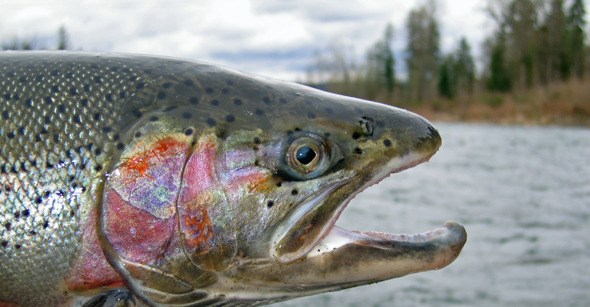Dear Editor,
I recently submitted the following letter to the F&W Commission. I thought this might be a timely topic for Forks Forum readers.
Dear Commissioners,
The following comments are directed at proposed rule changes developed by the North Coast Steelhead Advisory Group. I would like to make it clear that this ad hoc advisory group does not represent myself or the majority of the anglers residing on the Northwest Olympic Peninsula. Notification and participation in this group’s rule change efforts has been limited at best.
The truth is, most anglers are unaware that rule changes have been proposed and are likely to be adopted. The unfortunate history of public participation with the Washington State Department of Fish and Wildlife requires access to a computer or a willingness to drive to Olympia to attend a public meeting.
Grassroot participation is important to the public process when major rule changes are being proposed. A fresh new approach might involve meetings in rural communities like Forks where people who live closest to the resource have an opportunity to participate.
I have been a lifelong resident of the Northwest Olympic Peninsula and have lived next to the Sol Due River for the past 30 years. Prior to my retirement, I worked as a Forester/Local Manager for The Washington State Department of Natural Resources in the Hoh and Clearwater River basins located in West Jefferson County.
My duties consisted largely of forest management and resource protection, which provided a unique opportunity to interface with tribal and state fisheries biologists. Although I am not a biologist, the valued interaction that I had with many of these individuals is a basis for my opinions.
The importance of differentiating between salmon and steelhead is key. Before the agencies were combined, salmon were managed by the Washington State Department of Fisheries, as a food fish while steelhead were managed by the Washington State Department of Game, as a game fish.
In today’s climate of catch and release, it is important to remember that many anglers still rely on fish, predominately salmon, as an important source of protein for themselves and their families.
The perceived panacea of catch and release has a dark side that is not often discussed. Fish mortality. Fish mortality is caused by stress and hemorrhaging associated with hooking, landing and releasing fish, all in the name of sport.
The rate of mortality has many variables but is thought to range somewhere between 10 percent (Mike Gross, Fisheries Biologist, WSDFW) and as high as 40 percent (Jeff Cedarholm, Fisheries Biologist, WSDNR).
It seems intuitive that fishing seasons and gear regulations should reflect fish run strength determined by quantifiable data.
Political correctness relative to catch and release is a poor substitute for science.
Hatchery-raised winter steelhead return to the Quillayute River system from mid-November until the first or second week of January. This return migration is followed by wild steelhead that begin entering the rivers during the first part of January and continues until the end of April. Aside from the current one wild steelhead annual catch limit, the steelhead caught during this four-month period of time are wild fish that are required to be released.
The question that begs to be asked, is the run strength adequate to allow a catch and keep fisheries? If so, why not? Conversely, if the run strength is not adequate to allow a catch and keep fisheries, is it strong enough to provide a catch and release fisheries, considering anticipated mortality and wastage issues?
My primary objection with the current proposals developed by the North Coast Steelhead Advisory Group revolve around requiring barbless hooks, at all times in all North Coast rivers. If you subscribe to the assumption that wild steelhead stocks are threatened on the Northwest Olympic Peninsula and barbless hooks will assist with their release, then this will only have a benefit during the four months annually that adult wild steelhead are occupying the rivers.
Why would WDFW impose a barbless hook rule during the remaining eight months? From Sept. 1 through Nov. 30 the primary food fish, the salmon, return to the peninsula’s streams. Current data indicates that fall returns of both coho and chinook salmon are strong. I have fished streams with both barbed and barbless hooks and have found my success in landing salmon drops significantly when using barbless hooks. Barbless hooks have a direct impact on my ability to provide salmon for myself and my family. Fishing for us and our neighbors is more than sport.
The Washington State Department of Fish and Wildlife and the Wildlife Commission have an obligation to represent all anglers.
Please look closely at run strength data provided by both state and tribal fisheries biologists before imposing a year-round barbless hook rule.
Richard Cahill
Port Angeles



